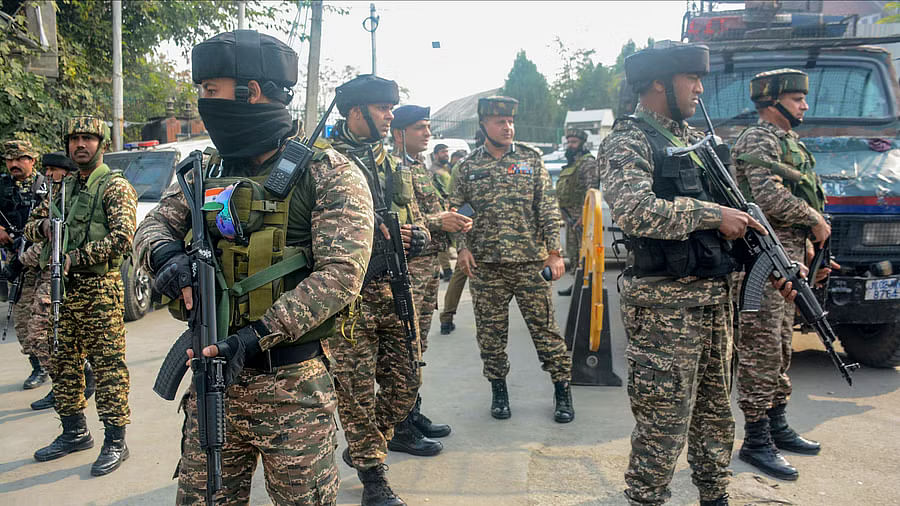
Security personnel stationed in Jammu & Kashmir.
Credit: PTI File Photo
Srinagar: In a disturbing shift Jammu and Kashmir is witnessing an increase in the infiltration of foreign militants, as local recruitment into militant groups continues to dry up.
Security experts and intelligence sources have raised alarms that Pakistan, facing growing challenges in recruiting local youth into militancy, is increasingly relying on sending foreign terrorists across the border to stir unrest and destabilize the region.
A national news magazine quoting intelligence inputs revealed that out of 119 active terrorists in the Union Territory (UT) 95 are foreigners, mostly Pakistanis while only 24 are locals.
“79 terrorists are active north of Pir Panjal range including 61 foreigners and 18 locals while in South of Pir Panjal number of active terrorists is 40 with 34 foreign nationals and six locals,” it revealed.
The Valley has seen an 80 per cent drop in locals joining militant ranks since 2022 mainly due to a combination of government counterinsurgency measures and a greater crackdown on terrorist financing networks.
As a result, the once steady flow of young Kashmiris joining militant outfits has slowed significantly, leaving terror groups to seek alternative ways of maintaining their presence in the region. In 2023, out of 72 terrorists killed by security forces, 50 were foreigners.
A senior police officer said the foreign terrorists operating in the UT are well-trained for jungle warfare, well-equipped and battle-hardened combatants. “They are a special breed, not the usual madrassa-minted recruits. Lashkar-e-Toiba and Jaish-e-Muhammad continue to be the main outfits but now there is a great amount of coordination between them,” he said.
“Post- August 2019 when a very different security strategy was adopted, the militant grid was hit hard. In the next two years, violence declined and recruitments saw a major dip. That made the Pakistani handlers change tack by pushing foreign terrorists,” the officer added.
Security forces have reported a growing number of infiltration attempts along the Line of Control (LoC) in recent months, as these outfits attempt to push trained foreign terrorists under the cover of thick forests and challenging terrain.
Despite the vigilance of Indian forces, intelligence suggests that these infiltration attempts are becoming increasingly sophisticated, with foreign terrorists being infiltrated through less-patrolled routes.
“The increase in foreign terrorists is a clear indication that Pakistan is finding it more difficult to rely on local recruitment, and is now shifting its strategy,” said a senior army officer. “These foreign fighters are not just coming to fight; they are being used to prolong the insurgency and keep Kashmir on the boil, despite the declining support from local youth.”